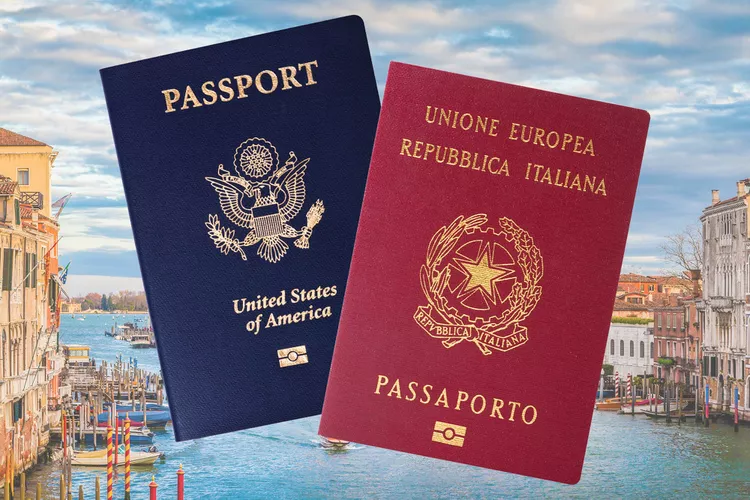Claiming Italian Dual Citizenship: A Personal Journey
As the ferry pulled into the dock at Liberty Island, tourists flowed out to complete their lap around Lady Liberty; however, my destination lay elsewhere. I fixed my gaze on Ellis Island—the birthplace of my journey toward Italian citizenship recognition that commenced over a century ago.
When my great-grandfather journeyed across the ocean in search of new opportunities, he was among millions of Italians immigrating not only to the U.S. but also to Brazil and Argentina. Notably, he retained his Italian citizenship and never naturalized. Thus, under the Italian law of jure sanguinis, he bequeathed the right to claim citizenship to my grandfather at birth, who passed it to my father, and eventually to me—without any of us ever realizing it.
To pursue dual citizenship, I discovered I needed to collect every single document related to major life events from my birth in the 1990s to my great-grandfather’s in the 1880s—noting that his place of birth was merely “somewhere in Italy.” Initially, I thought locating such an old document would be impossible. Nevertheless, after meeting individuals who successfully navigated the process, I learned that while challenging, it was attainable—though the journey requires significant dedication and time.
Eligibility for Italian Citizenship
Interestingly, there is no set limit regarding how far back your lineage can extend; however, having Italian ancestry doesn’t automatically mean eligibility for citizenship recognition. If any of your ancestors naturalized and gave up their Italian citizenship before the birth of the next in line, that lineage is effectively terminated. Thus, this is a critical inquiry to confirm before proceeding any further.
Family lore indicated my great-grandfather never naturalized—a fact I confirmed through records available on Ancestry.com along with a request to the U.S. Citizenship and Immigration Service (USCIS) for an official record of nonexistence to validate this point.
While this method was straightforward, proving citizenship eligibility becomes more complex when the Italian ancestor is female, as women were barred from passing on citizenship until 1948. Therefore, while you may still have validity, your path may require additional steps. The preliminary research phase can be intricate, yet online resources assist greatly. I connected with fellow citizenship seekers in online communities, albeit while often encountering conflicting information. A concise overview of the eligibility requirements can be found on the official website of the Italian Embassy in the U.S.
How to Find an Italian Birth Certificate
Upon realizing I had to locate my great-grandfather’s original birth certificate, I was enthusiastic about someday visiting my family’s ancestral home in Basilicata, Italy. I imagined knocking on the church door to unearth valuable records. However, I was advised to initiate the process by sending an email instead.
My attempts to contact my great-grandfather’s commune yielded vague results; no one seemed to remember his exact birthday or even the year. After several follow-ups with no reply, I understood that pursuing Italian citizenship often leads one to a burgeoning industry that caters to this need. Many agencies offer assistance, albeit at a cost. While some individuals choose to navigate the entire process independently to cut expenses—my strategy as well during most of the journey—seeking aid became necessary when attempting to find my great-grandfather’s birth certificate.
I reached out to ItalianSide, a service employing local genealogists in Italy to help track down family histories and applicable records for dual citizenship. Once I provided my great-grandfather’s full name and town, I learned he was one of several Pasquale Ditarantos born in that same locality. They requested additional details, such as whether he had siblings and when he immigrated.
Returning to the Ellis Island ship manifest, a chaotic tapestry of historical handwriting, I noticed a vital detail I had initially overlooked. Four lines above my great-grandfather’s name, another Ditaranto from his town appeared, suggesting he might have had a brother. I relayed this discovery via email alongside information about my great-grandmother, who was also from the same town.
To my delight, one month later, I received not only my great-grandparents’ original birth certificates but also those of their siblings, along with a complete translation detailing particulars such as the streets they were born on and the names, ages, and professions of their parents—a farmer, a tailor, and a spinner, to be precise.
Walking into the Registry Room of the National Immigration Museum, I approached vintage desks adorned with laminated copies of ship manifests. Within those walls, my great-grandfather had onscribed his name among a crowd of new arrivals in 1905. I envisioned his older brother glancing back, waiting for them to step through the door together. With all this ancestral chaos, they gathered closely enough to sign their names on the same page—thus creating a legacy that resonates even a century later.





